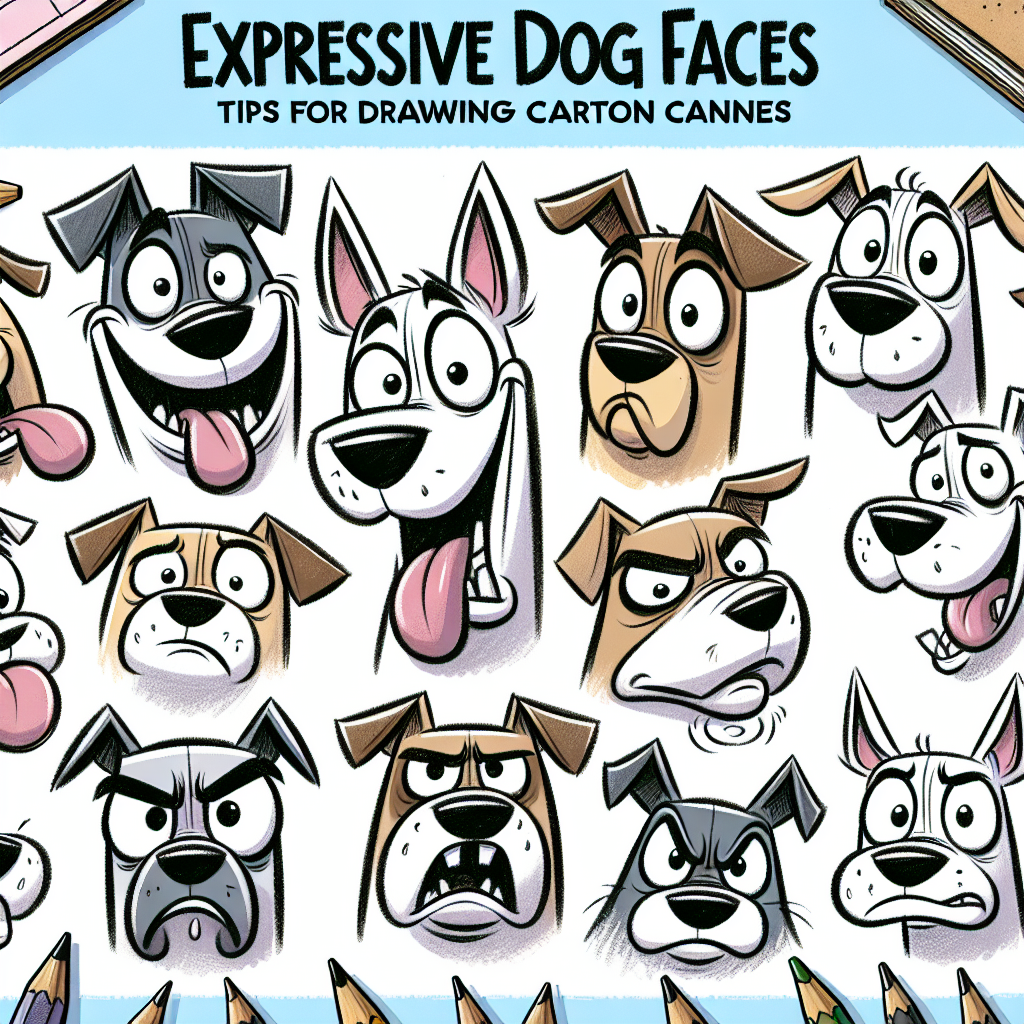Have you ever looked at a cartoon drawing of a dog and been amazed at how expressive and full of character their faces can be? From the playful wag of a tail to the eager tilt of their head, cartoon canines have a way of capturing our hearts with their unique expressions. If you’ve ever wanted to try your hand at drawing these lovable characters, you’re in the right place. In this article, we’ll explore some tips and tricks for creating expressive dog faces in your cartoons.
1. Start with Basic Shapes
When drawing a cartoon dog, it’s important to start with some basic shapes to establish the foundation of your character. Begin with an oval for the head, and add in circles for the eyes, nose, and mouth. From there, you can build on these shapes to create the unique features of your dog’s face.
2. Focus on Expressive Eyes
The eyes are often considered the window to the soul, and this is especially true when it comes to drawing expressive dog faces. Play around with the size, shape, and placement of the eyes to convey different emotions. For example, large, round eyes can make a dog appear surprised or excited, while small, narrowed eyes can give them a mischievous or skeptical look.
3. Experiment with Different Ear Shapes
Ears are another key feature when it comes to creating expressive dog faces. Try experimenting with different ear shapes – floppy ears can convey a relaxed or playful mood, while perked-up ears can suggest alertness or curiosity. Don’t be afraid to play around with exaggerated ear shapes to add even more personality to your cartoon character.
4. Play with Mouth Expressions
The mouth is where a lot of a dog’s expressions come to life. From a big, open smile to a droopy frown, the possibilities are endless when it comes to conveying emotions through the mouth. Consider adding in tongue lolling out or teeth showing for added character and humor.
5. Add Details to Enhance Expression
Once you’ve established the basic shapes of your dog’s face, it’s time to add in some details to enhance their expression. Consider adding eyebrows to convey surprise or anger, and don’t forget about whiskers, spots, or other markings that can add personality to your character. Remember, the devil is in the details.
6. Practice, Practice, Practice
Like any skill, drawing expressive dog faces takes practice. Don’t get discouraged if your first attempts don’t turn out exactly as you’d hoped – keep practicing, experimenting with different techniques, and studying the faces of real dogs for inspiration. The more you practice, the more confident you’ll become in capturing the essence of a dog’s expression in your cartoons.
7. Have Fun with It!
Above all, remember to have fun with drawing expressive dog faces. Cartooning is a creative and imaginative process, so don’t be afraid to let your imagination run wild and experiment with different styles and techniques. Enjoy the process, and let your love for dogs shine through in your artwork.
FAQ
Q: I’m not very confident in my drawing skills. Can I still create expressive dog faces?
A: Absolutely! Drawing is a skill that can be developed over time with practice and dedication. Start by practicing simple shapes and gradually build your confidence as you experiment with different features and expressions. Remember, the most important thing is to have fun and enjoy the creative process.
Q: Are there any online resources or tutorials that can help me improve my cartooning skills?
A: Yes, there are plenty of online resources and tutorials available that can help you improve your cartooning skills. Websites like YouTube and Skillshare offer a wide range of tutorials on drawing cartoon characters, including expressive dog faces. Take advantage of these resources to learn new techniques and gain inspiration for your artwork.








+ There are no comments
Add yours